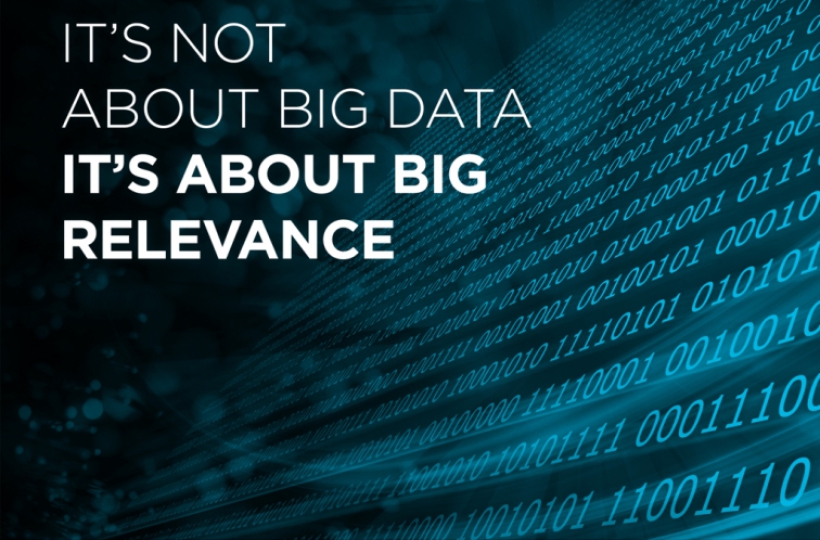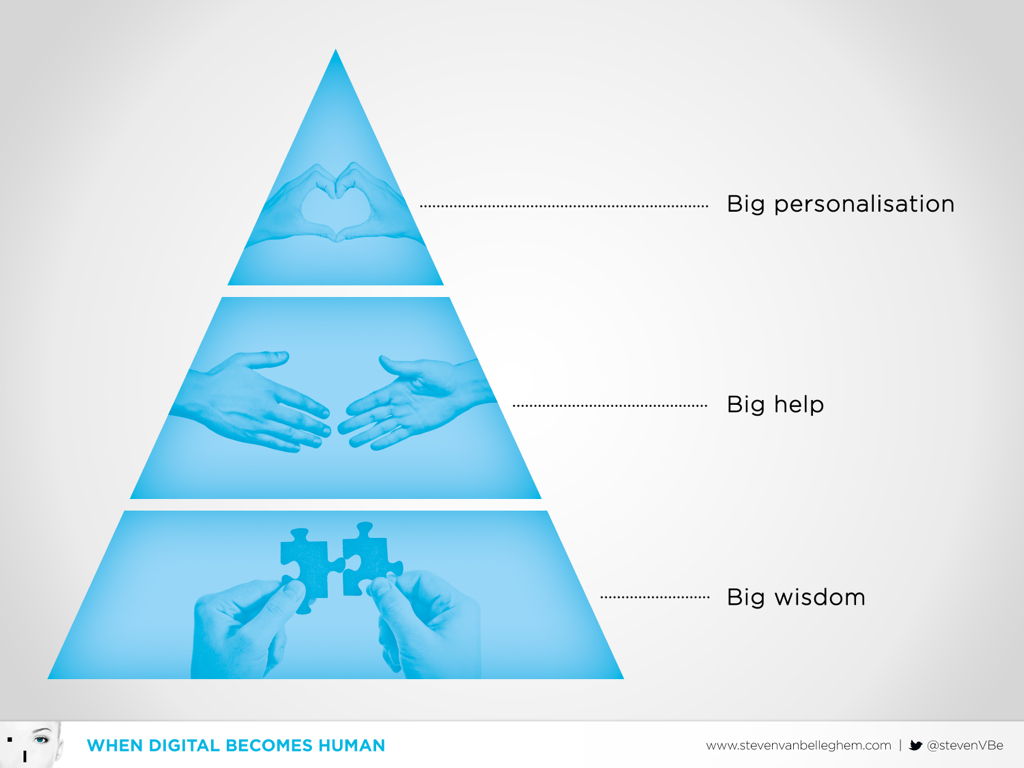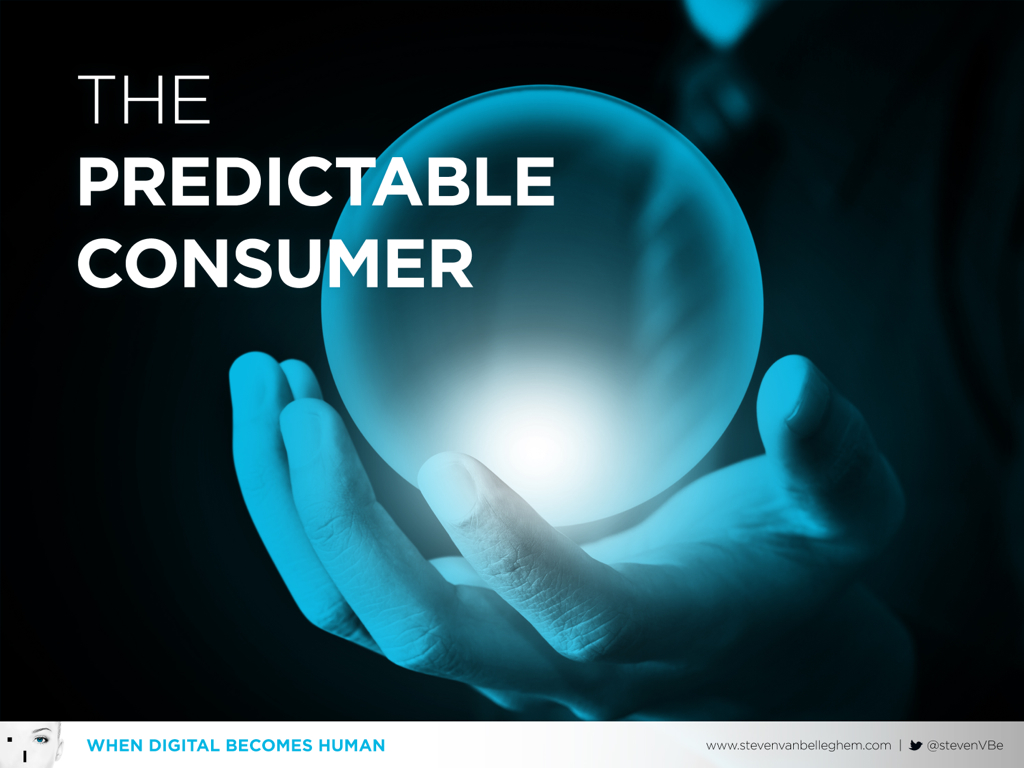From big data to big relevance

Big relevance
The digital customer relationship demands an excellent data strategy. The primary objective of the data strategy should not be a short-term increase in turn-over, but must focus instead on increasing levels of relevancy in the customer relationship. In my new book, ‘When digital becomes human‘, I discuss the customer relationship of the future. One of the basic fundamentals to successfully apply this philosophy is data: how you acquire it, how you store it and how you use it. For the customer, big data is all about big relevance. Modern consumers expect to receive some form of added value in return for all the data they provide. To ensure that they get it, a three-step pyramid model has been developed to show how data can be used to heighten customer relevance. The first step of the model is the need for greater knowledge of the customer. This forms the base for everything else. At the start of 2014, the Dutch retail group BAS installed beacon technology in its stores. During the initial phase, its only purpose was to collect more information about the shopping habits of its customers. “The creative marketing work only comes later,” says the company. The possibilities to acquire more and better information about your customers have never been so great (big wisdom).
The second step of the pyramid is the use of the collected data to provide better service to your customers. 44% of consumers are happy to make their data available for analysis, if this results in a better customer experience (big help).
The third and final step in the pyramid is the use of the data to personalize products, services and communication. 41% of consumers are again willing to share their data, if it makes such personalization possible. 46% would like to receive personalized information (big personalization). The combination of effects resulting from the correct use of the pyramid structure will indirectly lead in time to increased turn-over for the company.
From big data to big wisdom: better marketing decisions
Taco Bell, a successful fast-food chain, is an expert in social media marketing. Clever content and amusing answers to tweets have been their hallmark for a number of years. But more recently they have started to use their accumulated data from the online world to support new product launches. Lynn Hemans, director of competitive insights at Taco Bell, explained during a recent seminar just how much the methods of launching new products have changed during the past 5 years. New products are now launched initially in a test market. During this test phase, all the data collected at the check-out points (sales) is linked to relevant data on social media (feedback from first users). The sales data indicates if the basic concept of the new product has sufficient consumer attraction to succeed. The social media data evaluates the public perception of the product’s quality. A positive assessment for both parameters is necessary if the product is to have any chance of commercial success in the market place. The first generates ‘trial’. The second generates loyalty and word-of-mouth advertising. On this basis of this test phase Taco Bell decides whether or not to proceed with a full product launch. In the pre-real-time data age decisions of this kind were taken on the basis of market research. This usually involved a waiting time of 4 to 6 weeks before the first results were available. It then took another one to two weeks before the results could be assessed and a decision made. Companies now work with real-time data, so that decisions can be taken much more quickly. This is also the case at Taco Bell. If the company decides to go ahead with the full launch, the same data analysis (sales figures + social media reaction) is carried out. Experience has shown that this analysis can predict the likely final turn-over of the new product with an accuracy rate of 90%. Moreover, the data also helps Taco Bell to take better marketing decisions. In the past, the marketing plan was drawn up before the launch. This plan was then implemented irrespective of what the initial launch results showed. Nowadays, a provisional plan is still drawn up in advance, but the final details are discussed and agreed in real-time. If a product has good sales figures but only limited word-of-mouth support, a classic marketing campaign can still help. If the product is the subject of numerous online conversations, the expensive classic marketing strategies can be toned down.
First and foremost, big data is a new way to obtain information about consumers. In the years ahead, traditional market research will be increasingly replaced by real-time data. This will allow companies to make quicker and better decisions. Every bank or insurance company possess most of the crucial information they need to know about the lives of their customers. If a child is born, if they move house or if they change jobs, the bankers and the insurers will always be informed. This kind of information can be very useful for gaining deeper insights into the needs and wishes of consumers. In other words, big wisdom is the basis of a modern data strategy.
From big data to big help
The second step in the data strategy aims to use available data to assist customers proactively. This step has a strong impact both on encouraging return behavior and converting prospects into sales. On some websites, people need to fill in their personal details each time they visit. Smarter websites remember this data, so that the potential resale becomes much more efficient. Since in many cases people turn to e-commerce in the hope of finding greater sales efficiency, this is a significant plus point. 48% of consumers would prefer companies to store their basic personal data, so that they don’t waste time by having to repeat it. Many organizations collect data for commercial purposes and there is nothing wrong with this. But using this data to increase the level of service has an even greater impact. 81% of consumers will happily share data with companies, if this helps to speed up the service process.
The Israeli software company Nice Systems helps its customers to achieve better performance from their online systems. One of their applications is a kind of ‘app in an app’. Whenever a customer fails to complete a transaction, this is immediately identified by Nice Systems. Imagine, for example, that someone want to book an airline ticket via an app but for some reason the transaction doesn’t go through. At this point the Nice Systems app will ask the user if this was a failed transaction or if it was broken off for some other reason. If a failure is confirmed, the customer is immediately put in touch with a contact person at the company responsible for the faulty app. The customer can choose between chat or telephone.
In the future, companies will solve problems before their customers are even aware of them. Amazon has taken out a copyright on a service that sends products to people before they even know that the products exist. Amazon is convinced that it can predict what some customers want before the customers know it themselves! But this philosophy can also be applied more simply. A message from your telecom provider to say that you are not using the most beneficial tariff plan for your pattern of telecom use is another good example of big help based on big data.
From big data to big personalization
At Amazon, 35% of all sales result from personalized recommendations; at Netflix the percentage is as high as 75%. Personalization is therefore the third step in your data strategy. It is the ultimate way to raise your digital customer relationship to a higher level.
Many consumers are open to the idea of receiving the right (commercial) message at the right time. My own research has shown that 33% are either positive or very positive towards the concept of personalized advertising. Consumers like to buy products. Consumers therefore like to have information about products – but only relevant information provided at the moment when they most need it. The ability to manage big data effectively will be a major tool in helping to achieve extreme customer orientation in the years ahead. The expectations of consumers will continue to evolve. They will almost certainly be less tolerant about receiving the wrong message at the wrong time.
This presents a serious challenge to the modern marketeer. Instead of focusing on the average customer, from now on he will need to focus on the individual customer. Classic marketing involves getting to know and understand the average customer. This often resulted in the drawing up of a profile that was so general as to almost be meaningless. Many companies have ‘sporting males between the age of 25 and 45’ in their target group. This type of profiling was necessary to select the right media and to adjust the message to reflect the target group. But the problem of working with averages is that they also tend to produce average results. One of the classic marketing dictums is that ‘half of the marketing budget is always wasted; the trick is to find out which half.’ This is the result of failing to pay sufficient attention to the wants and needs of individual customers.
Ask the question!
Make sure you ask the question explicitly in your company: why are we going to use big data and what are we going to use it for? If the answer is linked to direct, short term financial results, you need to think again. If there is a screen in your powerpoint that contains the euro sign and the words ‘big data’ on the same slide, change it. The combination you need to achieve is ‘big data = big relevance‘. And relevance can only be created through wisdom, help and personalization.

